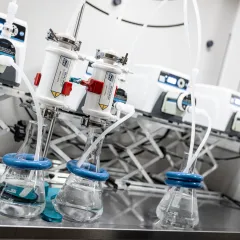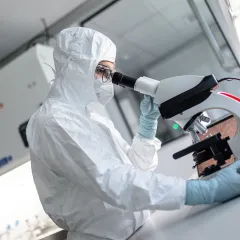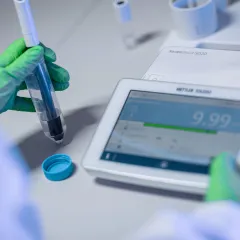MascoLab
In-process materials qualification and ancillary tests
Main regulatory and technical references: Annex 1, PDA TR No. 26, FDA Guideline Aseptic Processing, ASTM F838-15, USP <1663>, USP <1665

to demonstrate that the manufacturing process and product does not alter the in-contact materials physical structure. The process material is exposed to the product for the process time applying simulated worst-case process conditions. The compatibility between product and material is evaluated in terms of leak test (if applicable), drop test (when applicable), visual inspection and main physical dimensions.

to demonstrate that the manufacturing process does not alter, under simulated worst-case process conditions, the quality of the drug product. Specific analytical techniques (GC/MS, Q-TOF and ICP/MS) are performed to evaluate the presence of extractables compounds potentially toxic for patients. Semi-quantitative analysis are applied to detect and quantify a wide range of extractables compounds. Following extractables results, specific toxicological assessment can be issued and, if needed, leachables test can be performed.

to demonstrate that the in-contact material does not bind drug components affecting product specifications, e.g. API title decrease. Test is performed applying simulated specific process conditions.

to evaluate the biological reactivity of plastics and elastomers on cell culture and animals and classify plastics accordingly

to perform specific tests that allow a well-characterization of the materials for pharmaceutical use, e.g. appearance of solution, acidity or alkalinity, absorbance, etc

to assess the efficacy of sanitizing and/or disinfectant agents through the surface challenge tests on specific process materials (stainless steel, PVC, Silicone, Viton, etc.) using standard and/or specific test microorganisms.